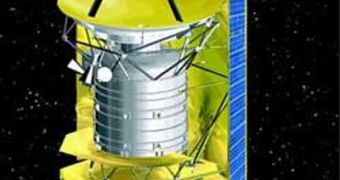Current space telescopes are very useful for understanding our surrounding piece of the Universe, with all the thousands of galaxies that populate it. But astronomers say that the real answers lie somewhere beyond the maximum penetration point of the best observatories we have today. And the issue here is not the technology employed, but the mechanical limitations imposed by the fact that humans cannot build large mirrors for their “eyes-in-the-sky.”
The main reason for this is the fact that nearly all telescopes that orbit Earth today have been assembled in space, and have been made from parts lifted in space by shuttles or similar vehicles. Therefore, they are limited in their design by the amount of cargo each of these delivery systems can carry. And the most important thing about a telescope is, obviously, its mirror.
In order for us to break the limits we have come to experience at this point, we need lenses that are extremely large, and not just over 30 or 40 feet in diameter, but maybe even half as big as a football field. Naturally, this type of mirrors cannot be built via conventional methods, and this is where photonic devices come in. They have the ability to guide and manipulate light inside specific types of materials, and are capable of cutting out micron-sized light pathways in three dimensions.
“Modern astronomy is on the verge of another revolution, which is going to be made possible by astrophotonics. For example, much of today's research in astronomy is focused on the detection of faint light from extrasolar planets in orbit around nearby stars and, at the other extreme, the detection of the first star-forming systems in the early universe. You need larger, more robust telescopes – and advancements in astrophotonics – to work on either task. It's really the birth of a new field in the international year of astronomy,” Joss Bland-Hawthorn and Pierre Kern, editors of the Focus Issue on the subject, published recently in the journal Optics Express, say.
The new trend in astronomy is to renounce the old way of observing, via pointing a lens at a certain part of the sky and looking for something, and to move to a novel way of doing things, which implies using images of the same spot in the sky captured by telescopes a good distance away. This basically means that the picture would look as if it was taken by an observatory that has a lens the size of the distance between the two telescopes used.

 14 DAY TRIAL //
14 DAY TRIAL //